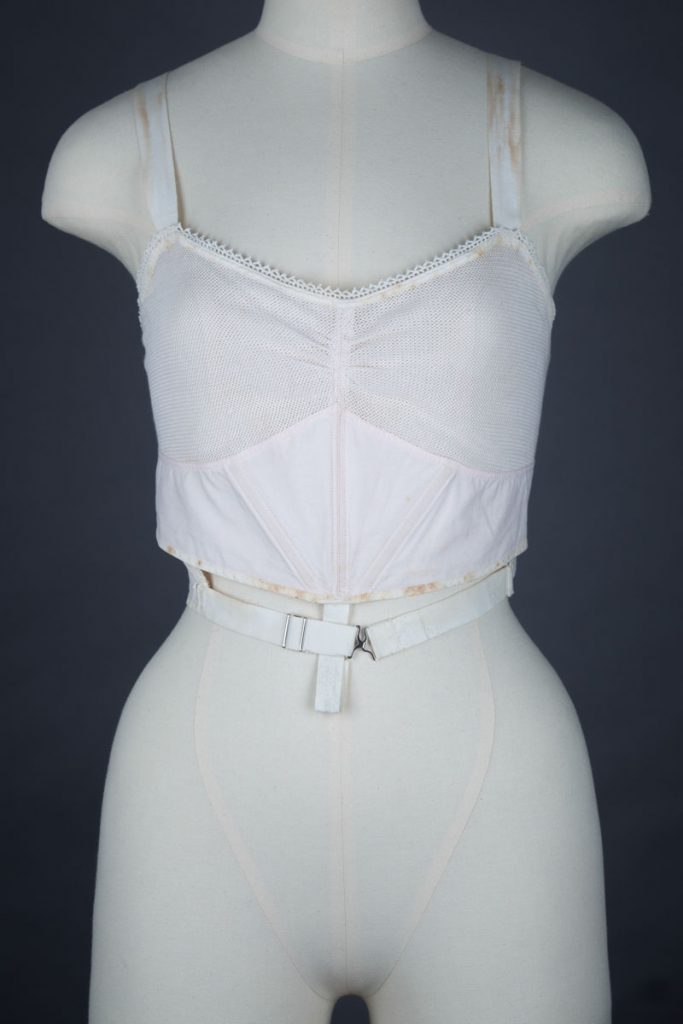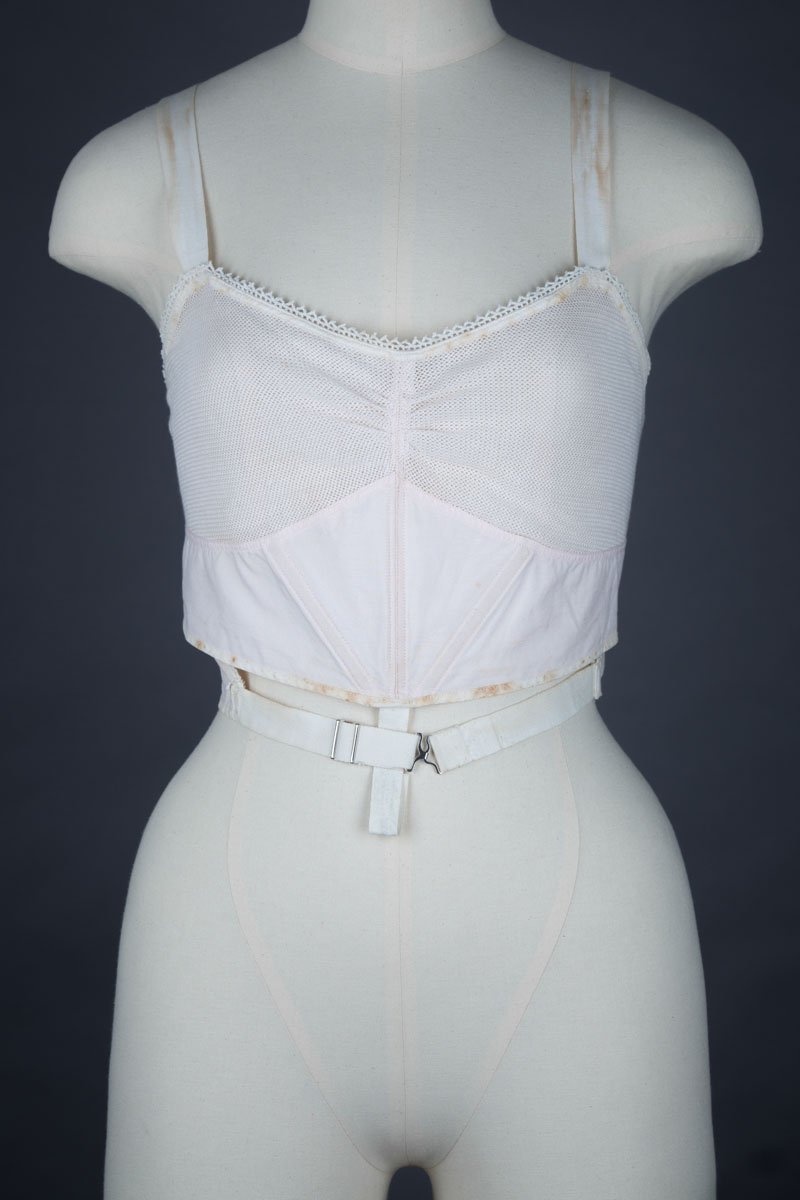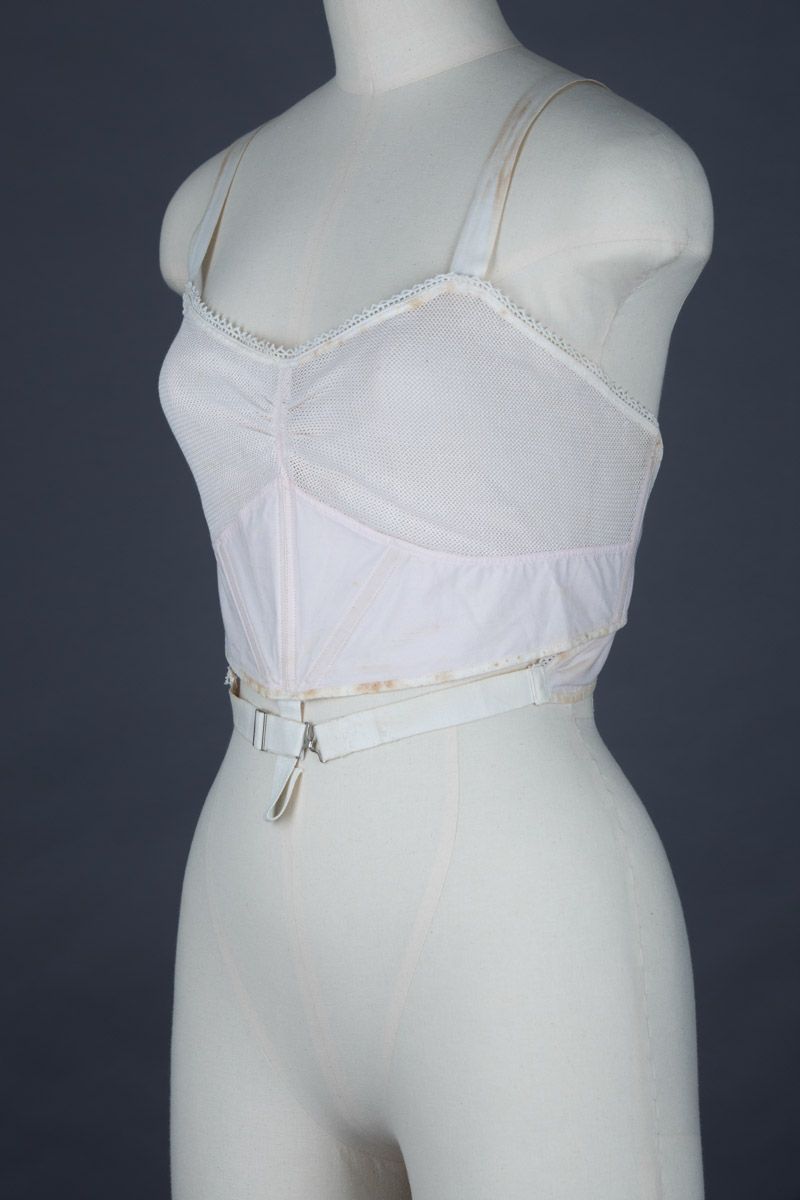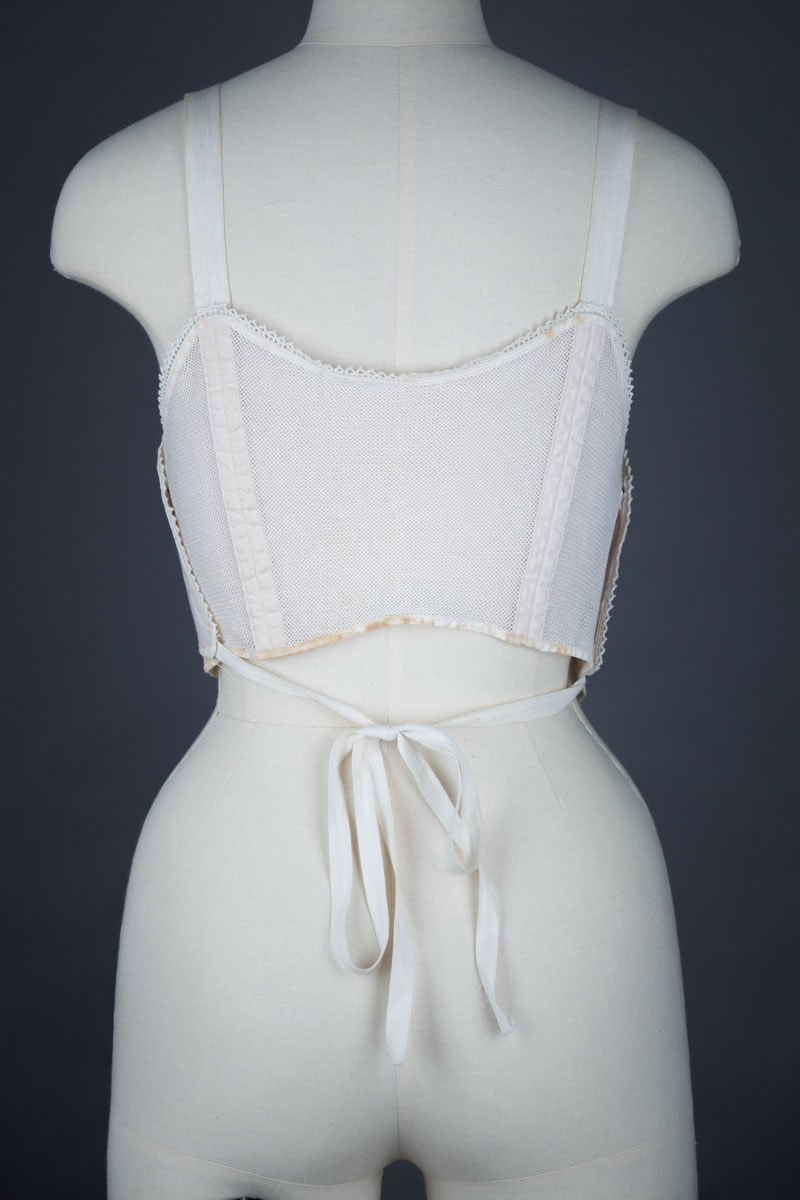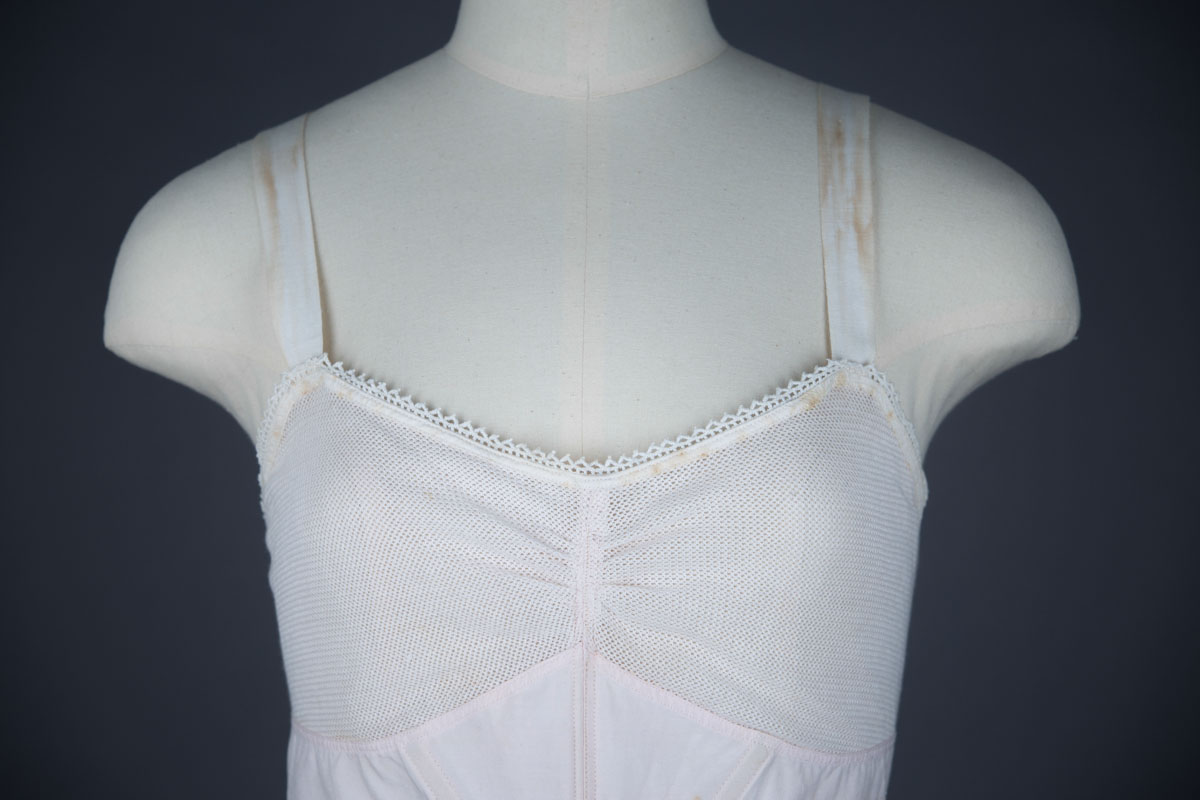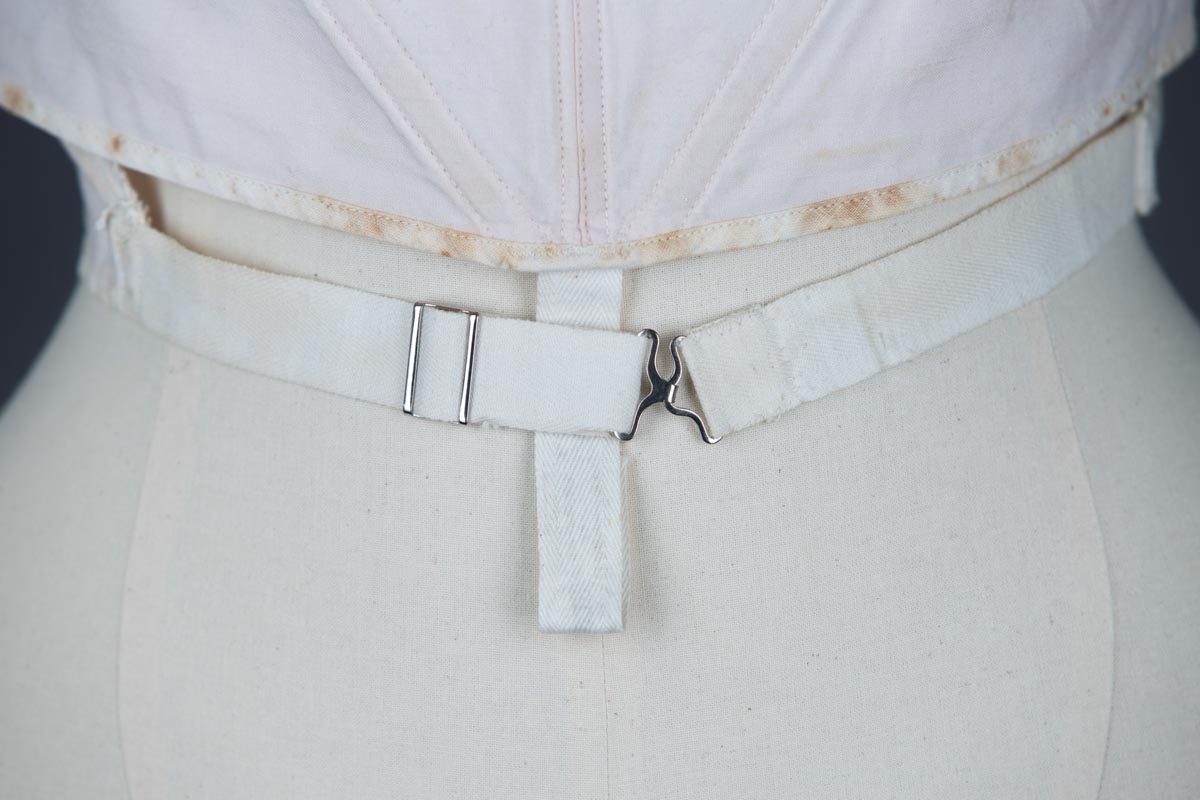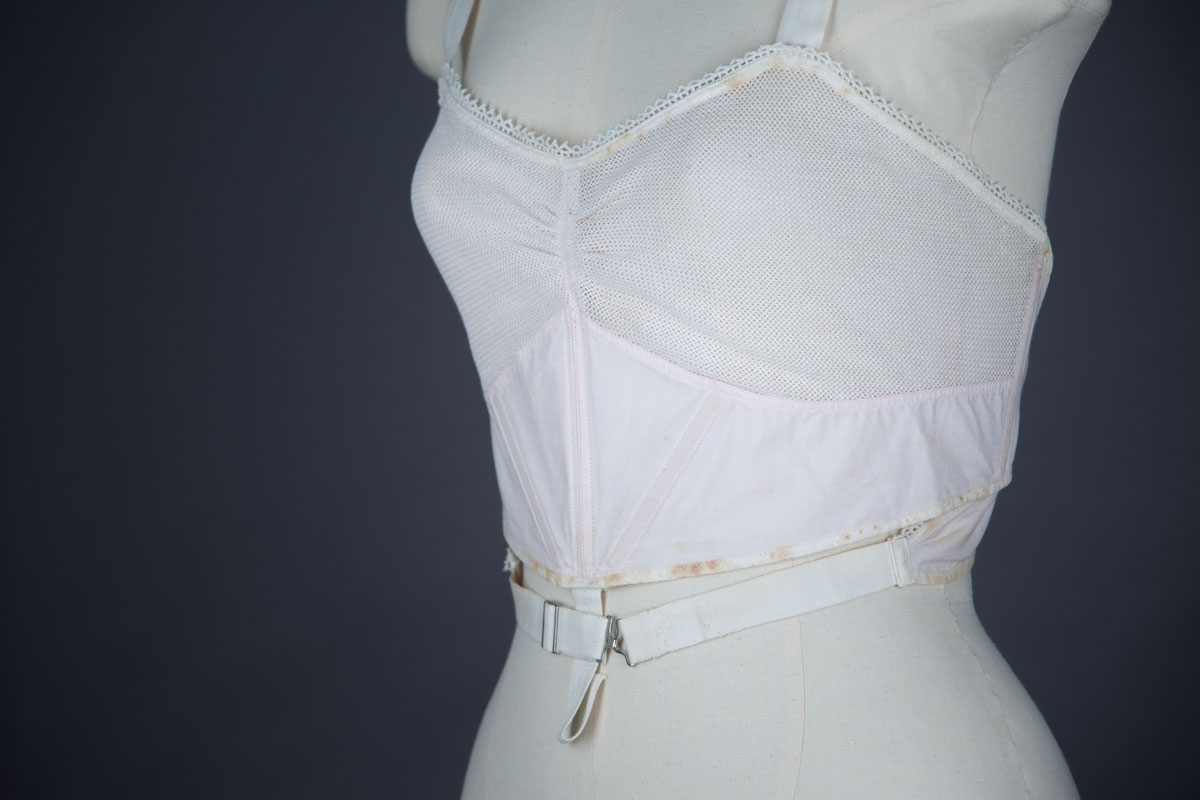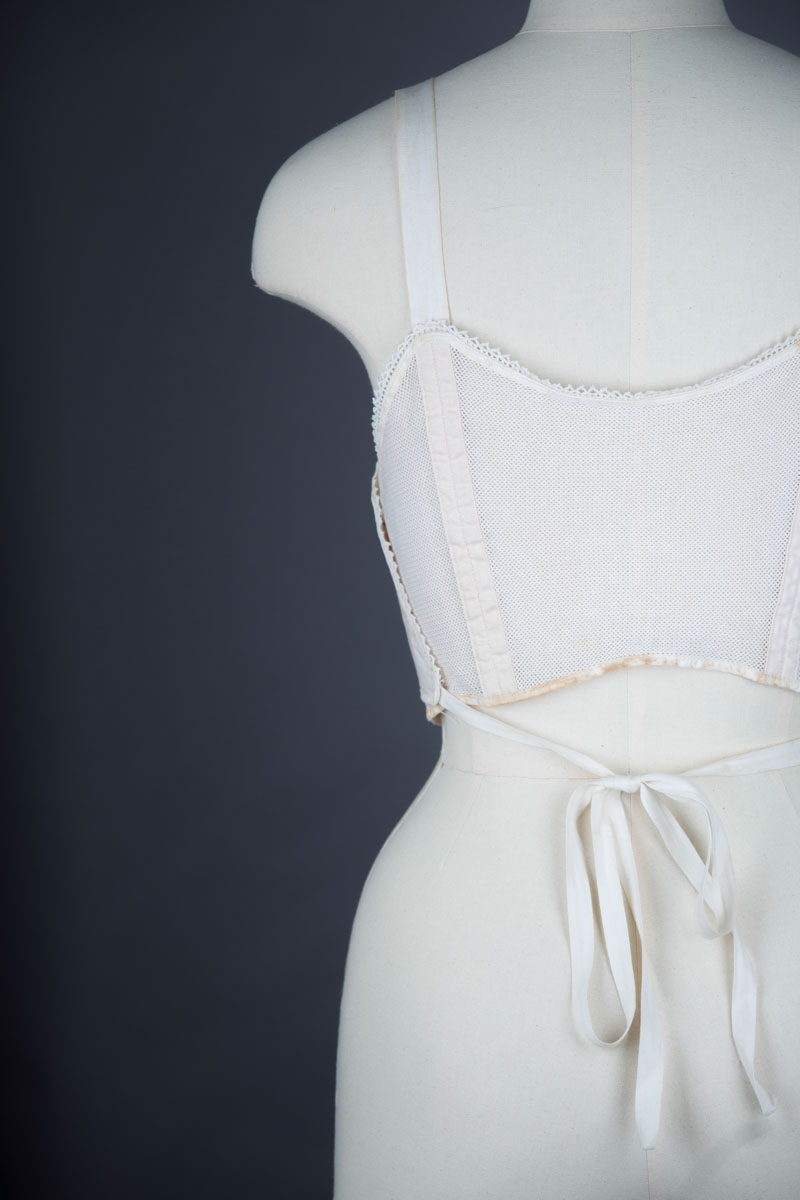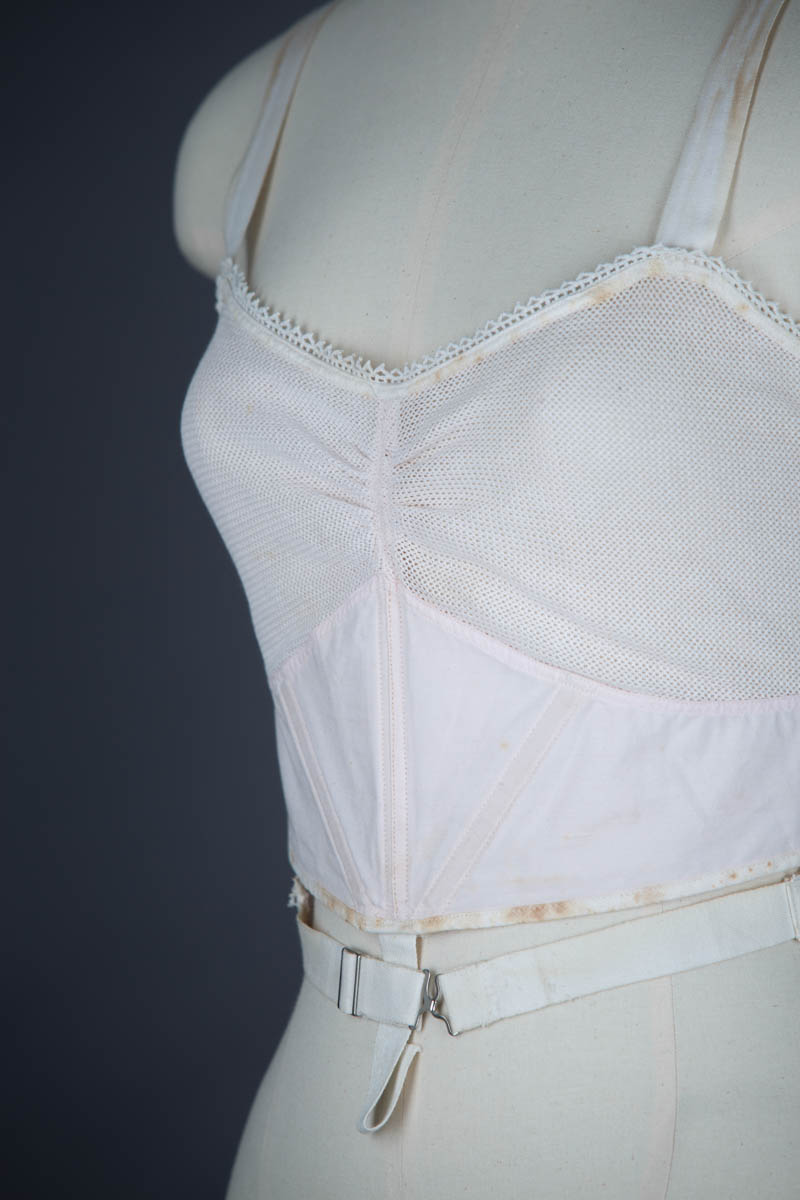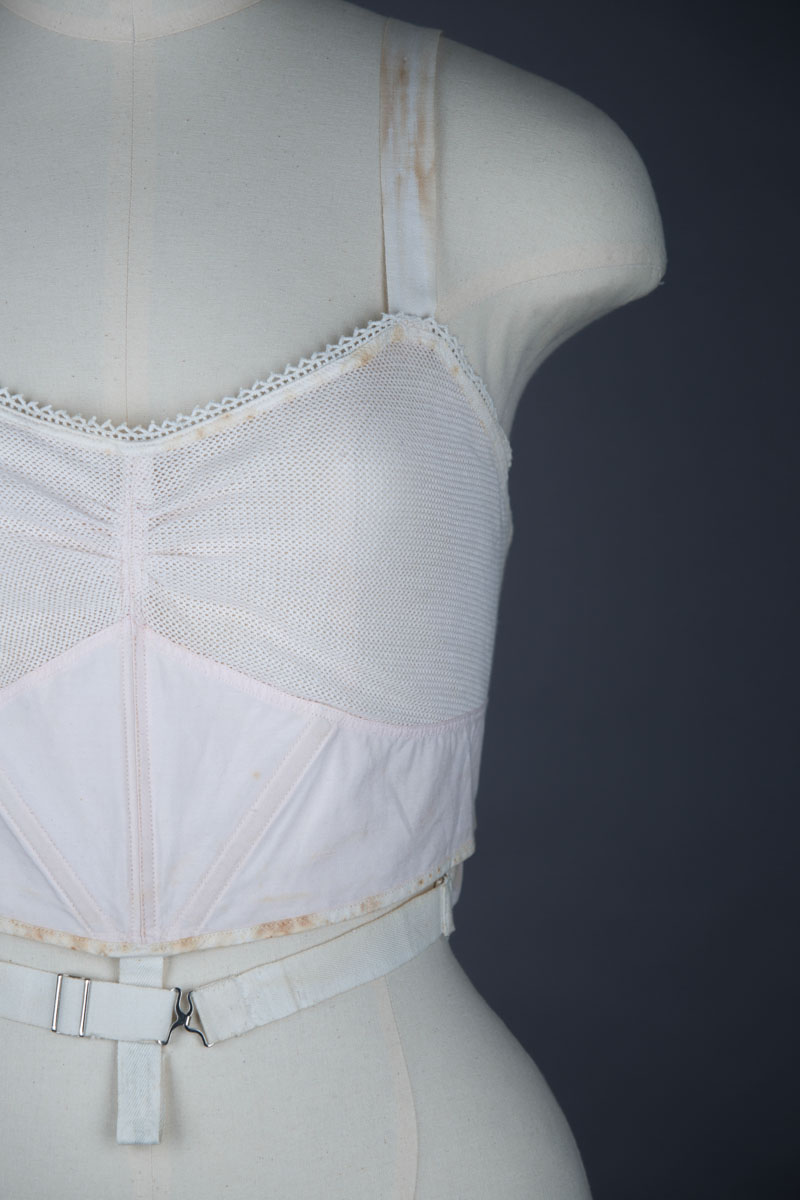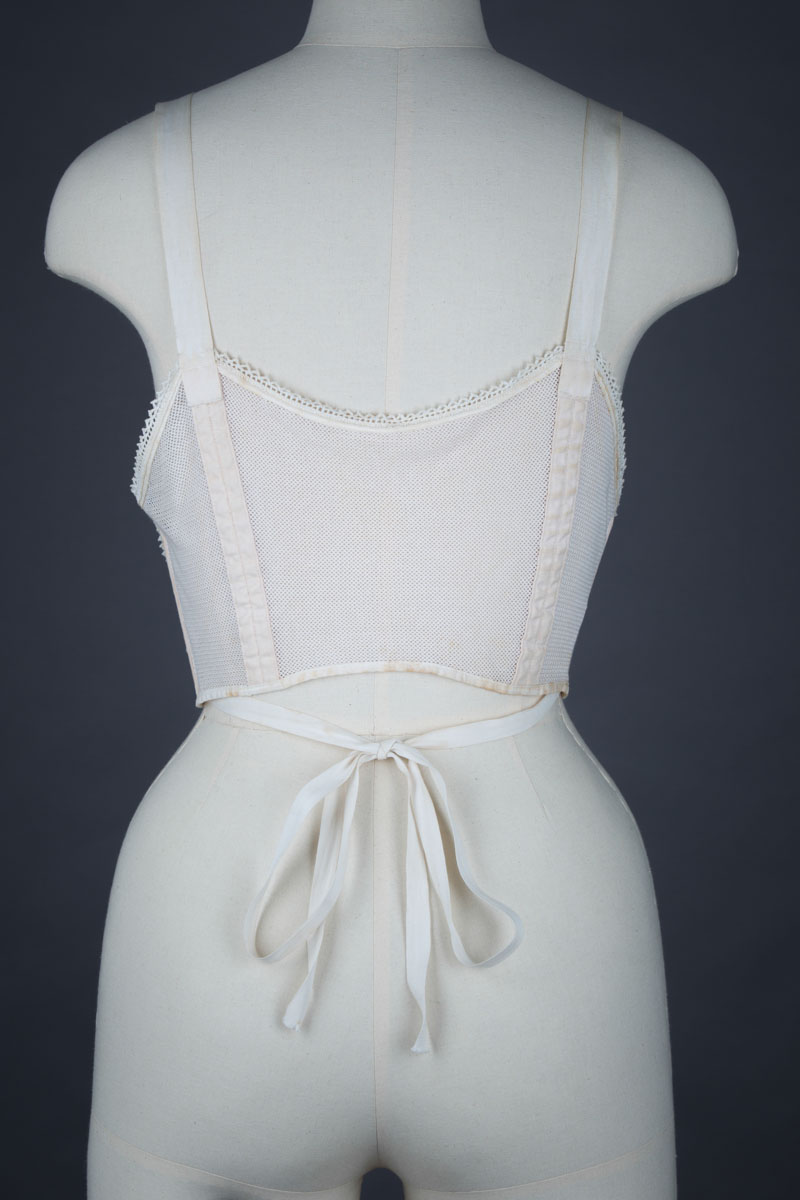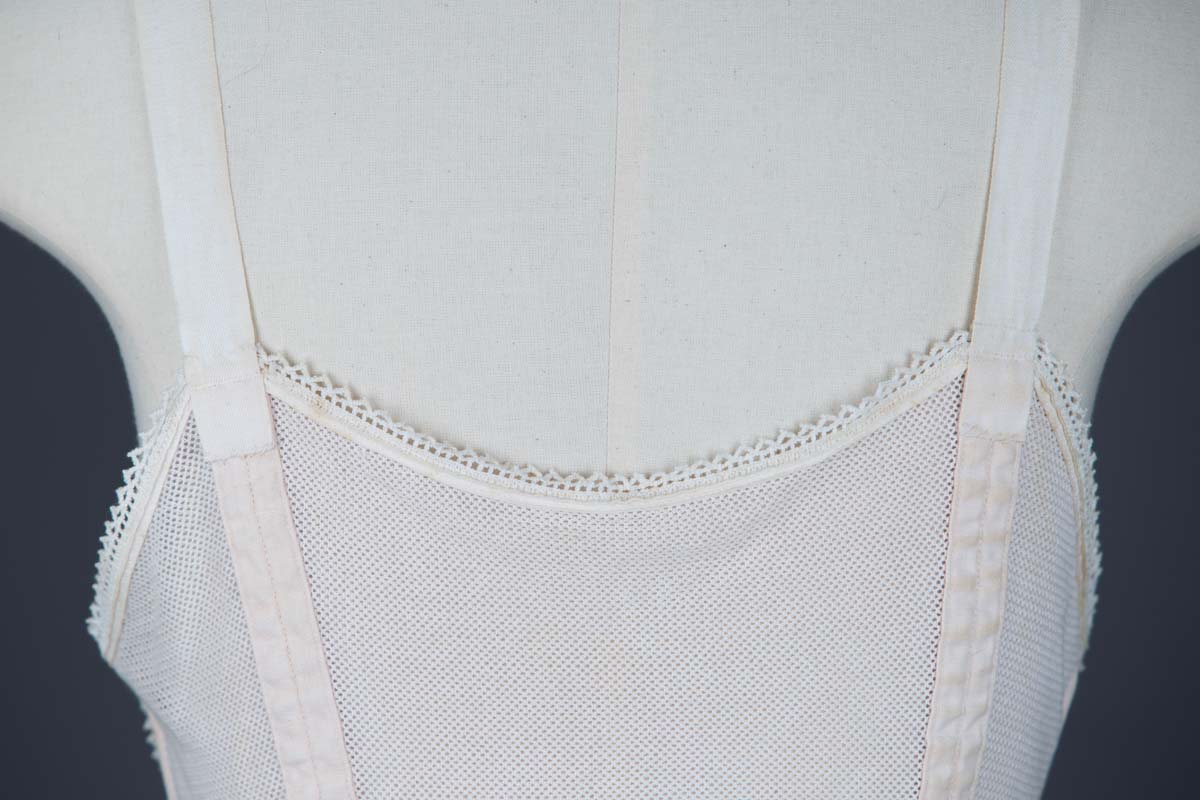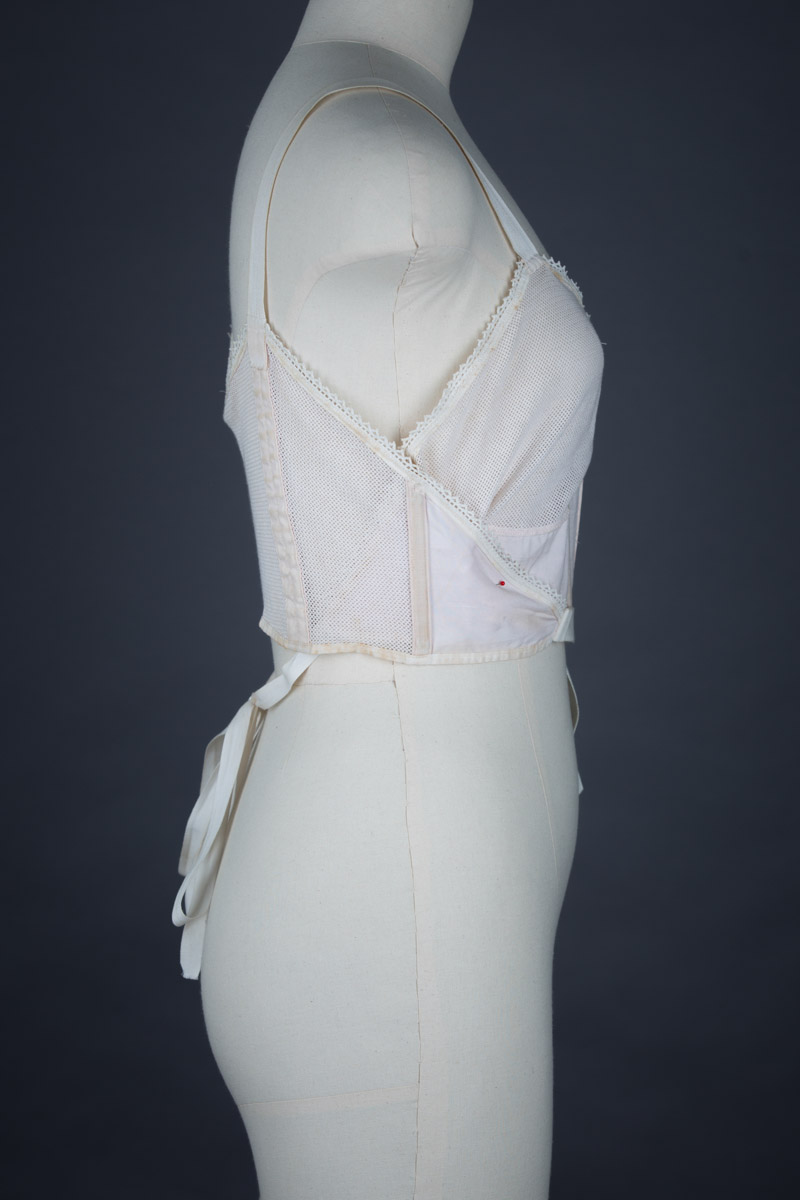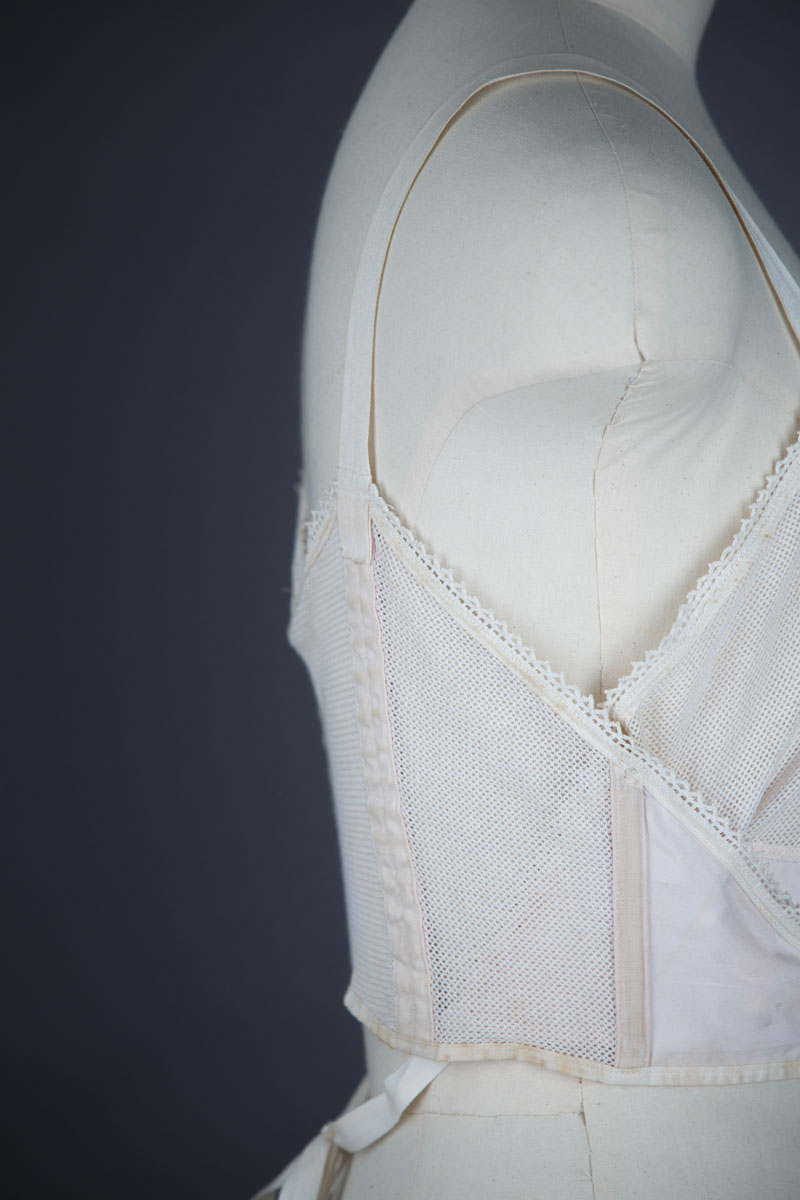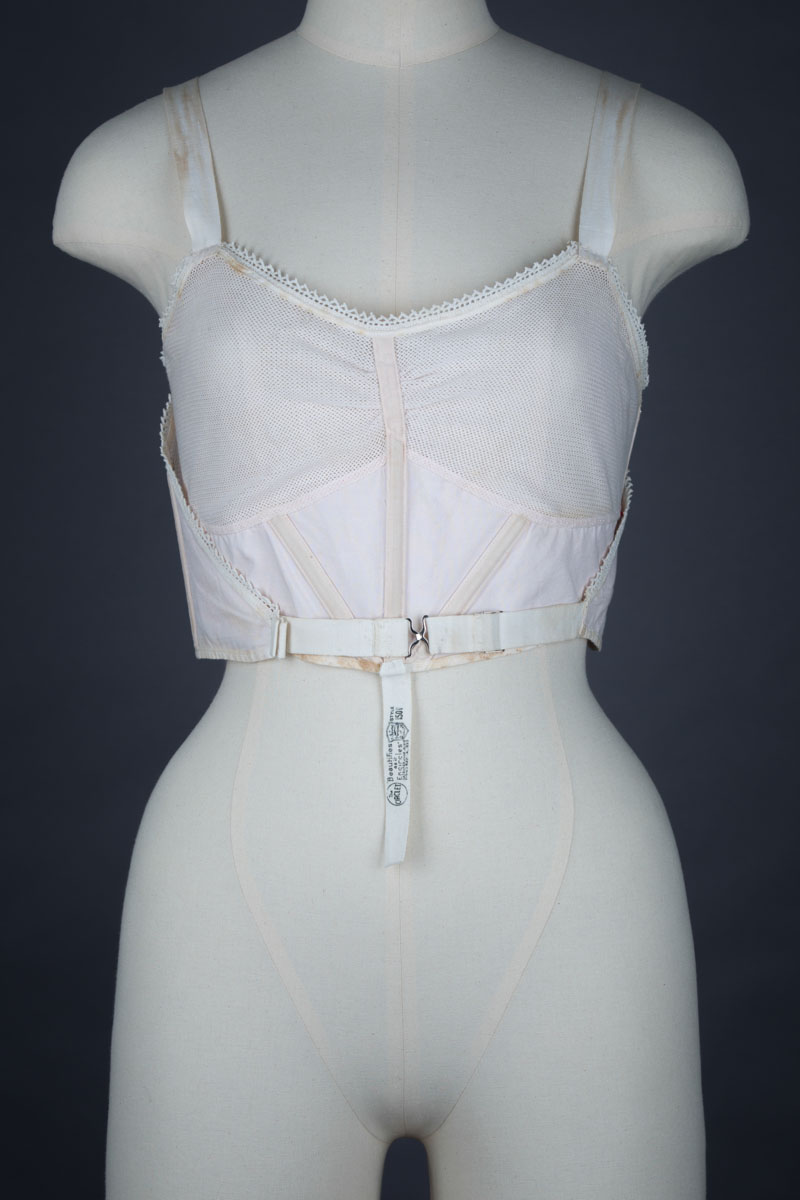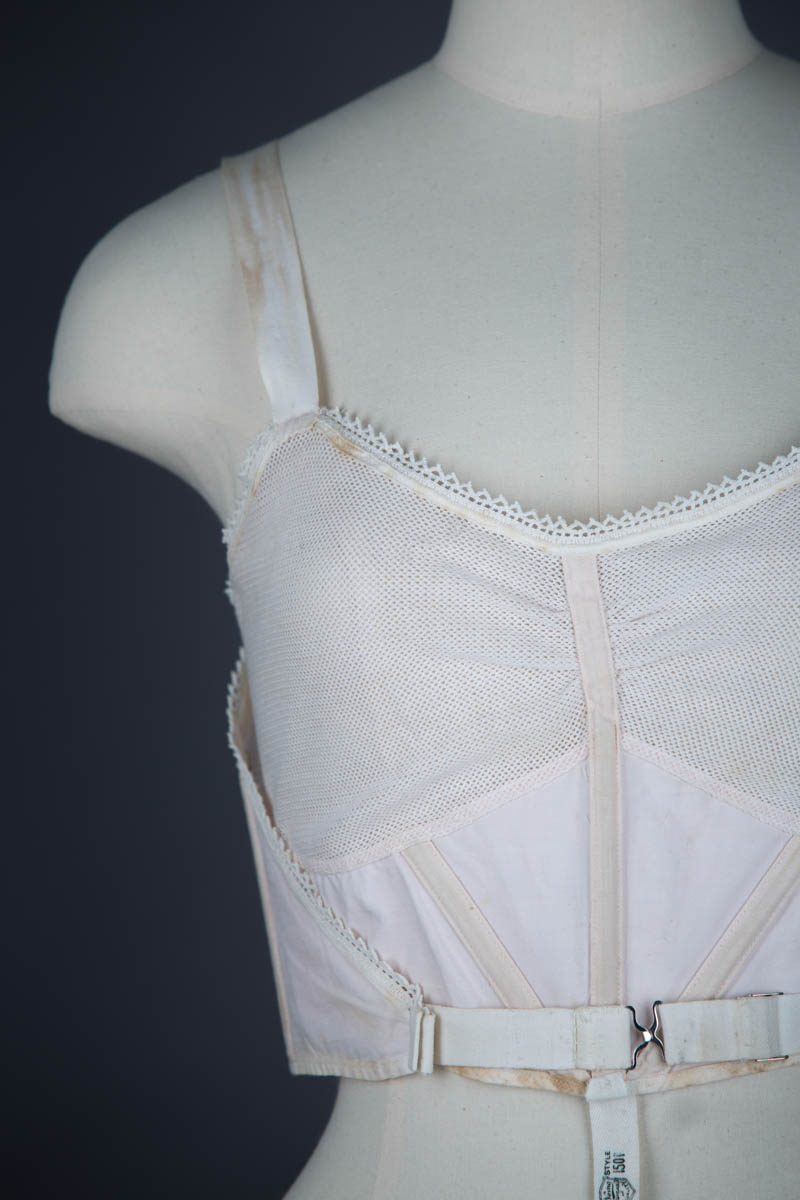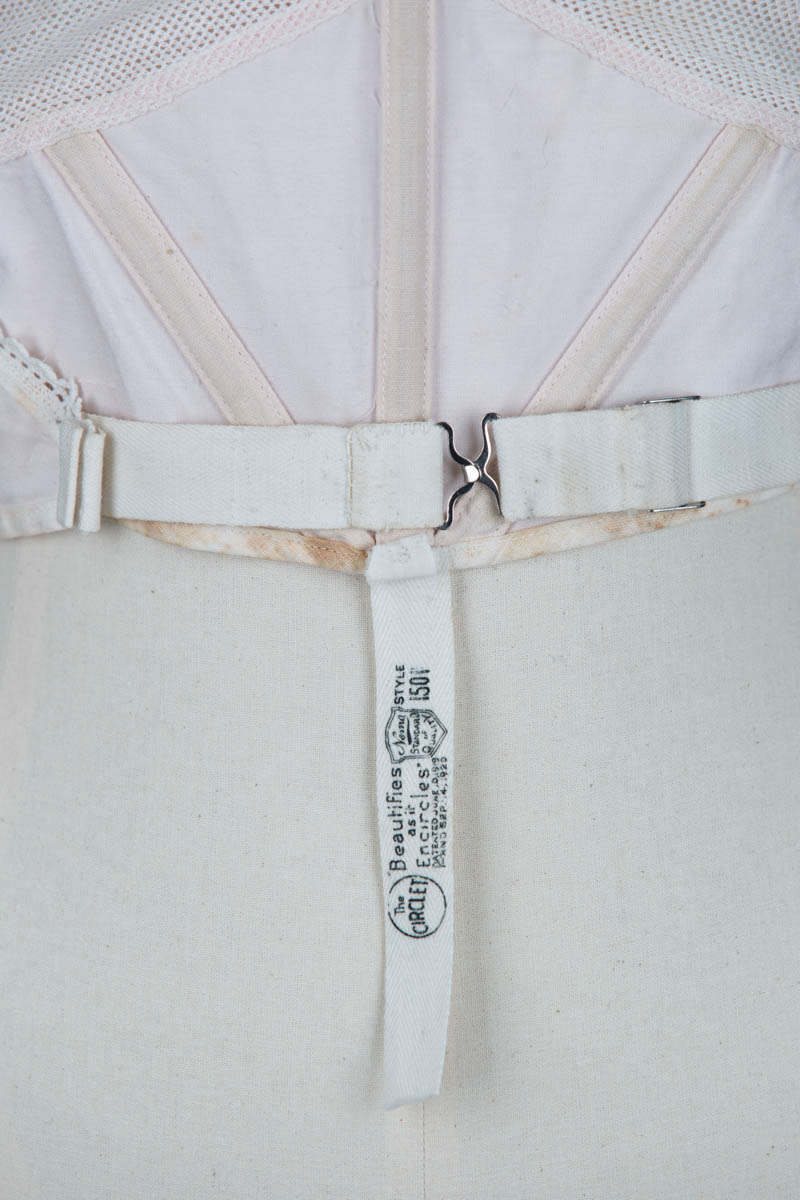Date: 1919
Origin: United States
Fabric: Cotton bobbinet tulle and cotton twill
Brand: Nemo
A very early brassiere style with an extremely innovative design for the time period, named ‘The Circlet’. A bandeau style, this bra is designed to compress down and streamline the bustline, creating the fashionable silhouette associated with the 1920s. This garment was patented in 1919, indicating that the Nemo company were one of the leaders in this particular silhouette trend. It also indicates how the confines of decades for particular fashion trends can often blur.
This bra is created in a combination of cotton bobbinet tulle and cotton twill, constructed neatly by a machine lockstitch. The ‘cups’ of the bra are made from a double layer of cotton tulle, ruched at the centre front to allow for some bust volume to be contained. The cradle of the bra is made from a tightly woven cotton twill, boned vertically and diagonally with flat steel bones, encase in twill tape casings. It is labelled a size 38, likely referring to the overbust measurement in inches. The back of the bra is likewise made of double layered cotton bobbinet, with wings of cotton twill. The bottom edge of the garment is made of cotton binding and the top edge features a narrow cotton lace trim.
The bra fastens at the sides of the body with sewn on metal snaps and features wraparound ties made from cotton tape with a metal adjuster, fastening with a hook at the front. A tape down the centre front with a tab to attach to a bottom foundation garment such as a girdle. The shoulder straps are also made of cotton twill tape and are fixed length.
The bra was produced by the Nemo brand of the Kops Bros company. The company was responsible for a number of underwear innovations from the early twentieth century through the 1920s. You can view a bra patent from 1925 filed by Waldemar Kops here and a corset featuring patented ‘Nemo’ garter tabs from 1908 here.
Founded in 1894 by Waldemar and Daniel Kops and registered as a company in New York in 1924, Kops Brothers was a corsetry firm with a zeal for patents. The brothers secured at least forty-one patents between 1904 and 1931. It was relatively easy for corset manufacturers to switch to making brassieres at this time because they were typically made from either the same types of lightweight fabrics as corset covers and drawers, or corset-weight coutil which was used for heavy duty styles to control and support the bust.
Textile and clothing historians Jane Farrell-Beck and Colleen Gau say in their book Uplift: The Bra in America that the Kops Brothers’ bras were perhaps the most conservative in styling and their ‘wrap-around designs and extensive use of corsetlike adjustments may have appealed to mature women.’ They claim that the Kops Brothers brassieres, Nemo Circlets, ‘had a stodgy image’ before 1924 when Kops Brothers switched their advertising account to a firm known for its market research, in an attempt to address flagging sales. By following the demands of their customers, Kops Brothers escaped the fate of many other early twentieth century bra companies and survived until the late 1960s.
From the collection of The Underpinnings Museum. Kindly subsidised by Cult Of Chiffon.
